Silicon Island: Green by design
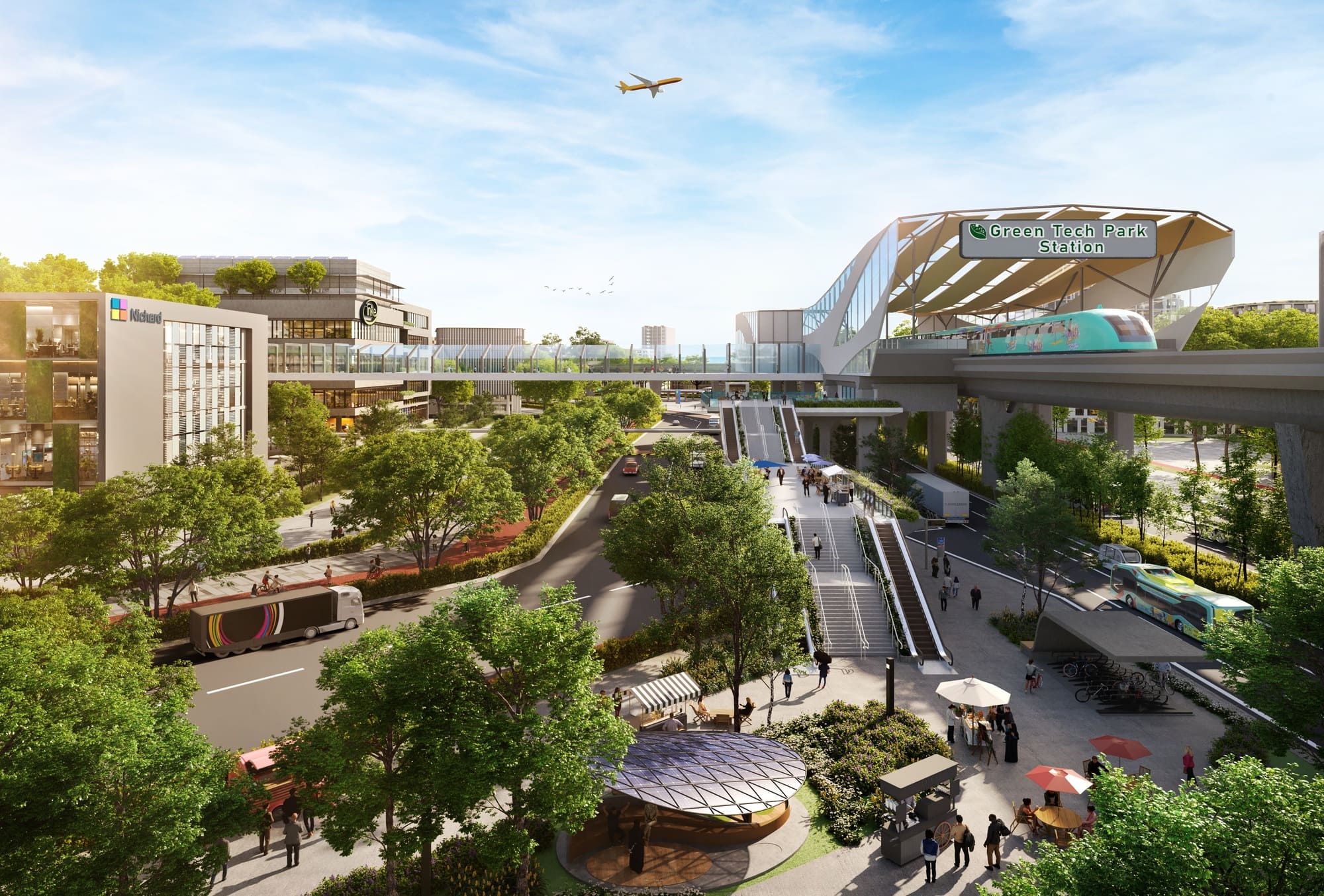
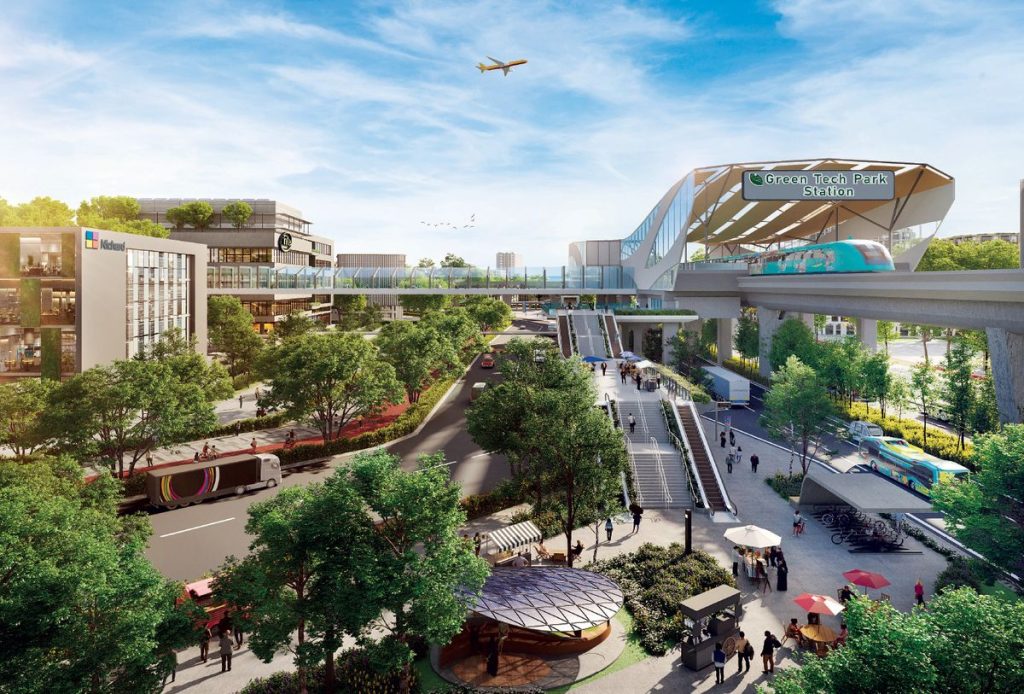
Penang has long been known as the hub of the electrical and electronics (E&E) sector in Malaysia, attracting high-value investments and nurturing generations of techpreneurs in the country. But as the digital economy continues to expand rapidly, there is demand for the state to elevate its manufacturing sector to the next level, and to provide more space and infrastructure for forward-thinking and innovative companies to invest in the latest technologies.
The state government, however, has not let limited availability of land on the bustling island prevent it from meeting this demand. Thus, the Silicon Island project, for which about 2,300 acres of land are being reclaimed for a high-tech, sustainable and resilient development, was conceived. The project, which commenced in 2023, will include a Green Tech Park, residential areas and commercial zones.
But this is not just a development for its own sake. Silicon Island is designed from the beginning to adopt sustainability principles so that the development remains resilient to external shocks, with minimal negative impact to the environment and communities. In fact, sustainability is the driving force behind the Silicon Island development, which is a joint effort by the Penang government and Gamuda Bhd (KL:GAMUDA  ). This ensures that the project will remain relevant into the future, balancing the needs of development and nature conservation while benefiting the local communities.
). This ensures that the project will remain relevant into the future, balancing the needs of development and nature conservation while benefiting the local communities.
Currently, the island holds a 5-Diamond Low-Carbon City Accreditation by Malaysian Green Technology and Climate Change Corporation (MGTC), reflecting its commitment to create a thriving community of businesses and residents while maintaining a low-carbon footprint.
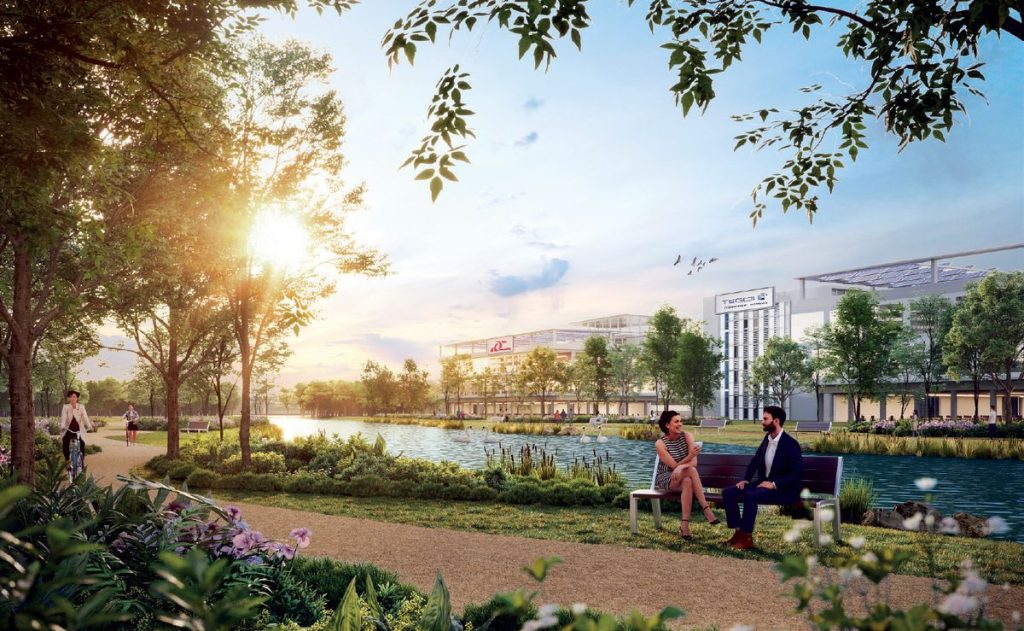
An attractive place to work and live
The Green Tech Park, which is the cornerstone of Silicon Island’s sustainability vision, will be 100% powered by renewable energy for the first phase, and feature smart water and waste management systems. This will fulfil the requirement and demand of global corporations, especially those in the E&E manufacturing sector, who aspire to meet their ESG (environmental, social and governance) commitments.
The target sectors for the industrial zone include electronic design automation, medical devices, advanced packaging, semiconductor capital equipment (semicap), automated test equipment and avionics module design. The first parcel of land is expected to be ready by early 2026, after which factory construction can commence. Operations are expected to commence in the second half of 2027.
Throughout the island, there will also be a focus on green spaces and sustainable mobility following the 15-minute city concept, where daily necessities and services are easily accessible on foot, by biking or public transport.
This would make Silicon Island an attractive place to work and live in, thus addressing the “brain drain” and attracting skilled talent to Penang.
Silicon Island is also built to be resilient, accounting for the impact of climate change and rising sea levels. The stormwater drainage system, for instance, is designed to cater to heavy storms, and the coastline is protected by mangrove forests.
Living close to nature
Residents on Silicon Island would be able to spend their time enjoying lush parks, the beach, mangrove wetlands and a network of water canals throughout the island, as 17.5% of the total land area on the island has been designated as green space.
Wetlands, floodplains and bioswales are integrated into the landscape, serving as natural water infiltration systems that are also aesthetically pleasing. The canals are not just for recreation but also form part of the island’s “blue network” for water transport.
The mangroves protect the island from erosion and storm surges; and, together with the lush greenery on the island, absorb carbon emissions, lower average temperatures and improve air quality.
The inclusion of these natural features is also part of the Sponge City concept, under which stormwater runoff is absorbed during heavy rainfall, thus preventing the worst impacts of flooding.
These green and blue networks are integrated into the master plan of the Silicon Island development, with more than 23,200 mangrove trees planted so far.
Healthy and sustainable ways to travel
Instead of travelling by private vehicle, residents of Silicon Island get to enjoy lower-carbon and healthier forms of mobility: walking, cycling and taking public transport. Bicycle and walking paths spanning more than 100km will be installed across the island, and with Penang’s Mutiara Line LRT passing through the island, a 70:30 public-private transport mode share is expected.
The pedestrian and cycling paths will be well shaded and serve as convenient first and last mile connectivity options. The Mutiara Line LRT, which includes the depot and station on Silicon Island, connects the island to other parts of Penang, helping to complete the sustainable mobility journey for residents.
For those who prefer water transport, the 6km canal network will be ploughed by electric water taxis, complementing the land-based green transport alternatives. Autonomous trams and electric buses will also be introduced, further minimising the need for private cars.
All these initiatives are expected to achieve a 45% reduction in overall carbon emissions for Silicon Island, compared to conventional urban developments.
For businesses, this would result in reduced traffic congestion and thus, more efficient logistics processes and lower transport costs for employees. For residents, this means saving on car ownership, fuel and parking expenses.
Overall, fewer cars on the road would contribute to cleaner air, promoting a healthier living and working environment on the island.
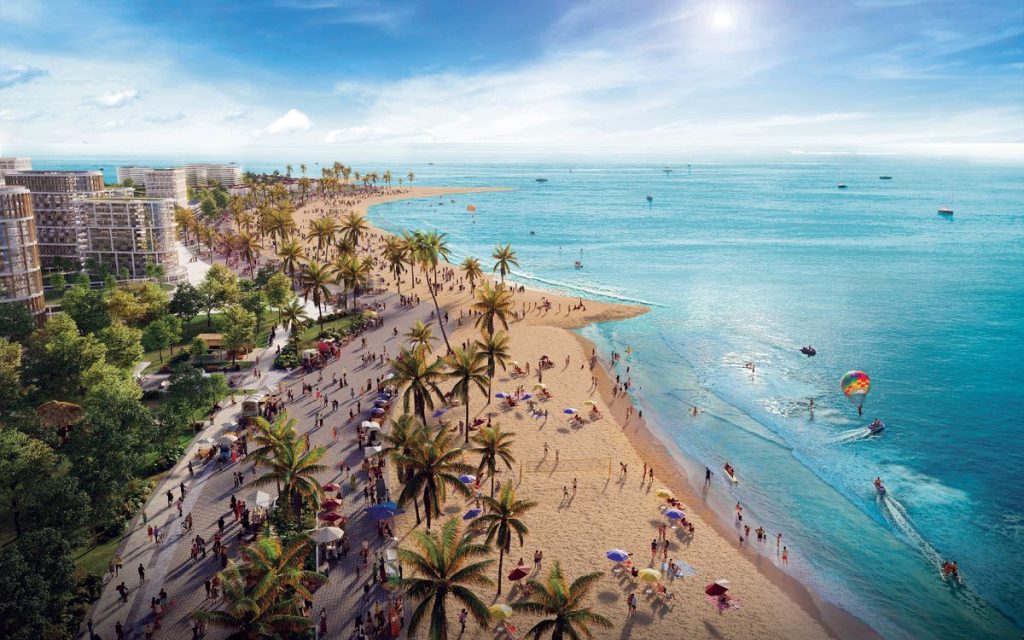
Greener way of manufacturing
Industrial tenants of the Green Tech Park would find their sustainability journey enabled by the features built into the industrial park. In fact, the first phase of Green Tech Park will be 100% powered by renewable energy via extensive rooftop solar photovoltaic installations and off-site renewable energy procurement.
Through these arrangements, tenants can significantly reduce their Scope 2 emissions from purchased electricity and benefit from more stable electricity prices. It would also contribute to their sustainability commitment, increasing the tenants’ appeal to ESG-conscious customers and investors.
Other than that, the master plan for the Green Tech Park emphasises climate-responsive design and the construction of super low-energy buildings that rely on energy-efficient cooling systems, optimised ventilation and smart lighting.
Smart water management is another aspect of the Green Tech Park that is relevant to the sustainability journey of businesses. Dual-function sewage treatment plants, which recycle water for non-potable uses — such as landscape irrigation, cooling, toilet flushing and general washing— are included in the master plan.
Advanced waste management solutions will also be available on Silicon Island. Every household, and likely commercial and industrial kitchens, will be equipped with food macerators to break down organic waste before it enters the sewerage system, reducing pressure on landfills and reducing methane emissions.
To increase the recyclability of waste and separation of waste at source, an enclosed pneumatic waste collection system will be installed.
Developers for the Green Tech Park have to submit plans demonstrating how they will meet these green design and operations criteria, such as minimum energy efficiency standards, water usage targets, waste diversion rates and the use of green building materials.
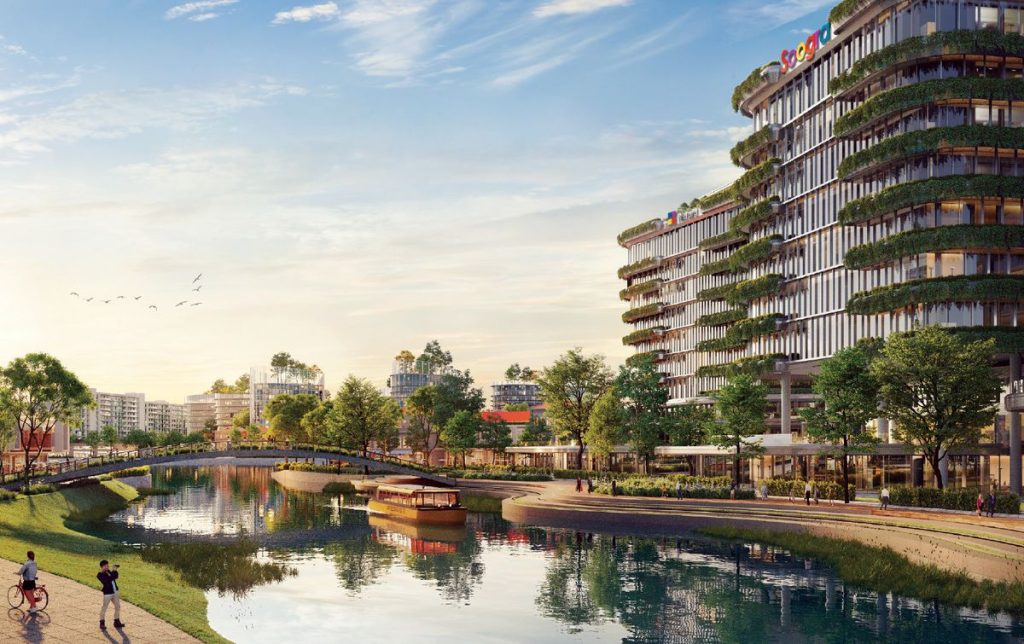
Ensuring local communities benefit
Each development will have some form of impact on the environment and surrounding communities. To address this, Silicon Island has in place a Social Impact Management Plan (SIMP) and Penang South Island Ecology Offset Master Plan (PEOM), which were established to address the socio-economic and environmental concerns associated with the reclamation project, particularly on the local communities like fishermen. Over 10,000 seabass and 52,000 tiger prawns have been released to date as part of PEOM.
Under the SIMP, ex-gratia payment is given to affected fishermen as a form of financial assistance. As at January 2025, the state has handed out RM11.7 million in ex-gratia payments to 791 eligible fishermen. They also received new boats with more powerful engines and better fishing technologies.
To provide alternative livelihoods, the Penang government is funding the fishermen to join professional seafarer courses and other upskilling programmes, and exposing their children to various educational programmes. Community hubs, including new village community management council halls, fishermen’s one-stop service centres, food stalls, restaurants and sheds, are also being built.
Meanwhile, the PEOM focuses on actively restoring and enhancing marine ecosystems that could be impacted. This includes activities like mangrove planting and the deployment of artificial reefs and fish aggregating devices in the waters off Pulau Kendi and other strategic locations, which create new marine habitats and attract fish.
There is also the release of fish and prawn fry to replenish marine populations, and the building of eco-shorelines along the reclaimed island’s perimeter to create new and diverse habitats. Research grants are provided for marine ecology, fisheries, turtle and coral reef research to help the state better understand and manage the marine environment.
During the reclamation process, the Department of Environment will monitor silt curtains, round-the-clock turbidity and water quality to minimise the intermediate environmental impact, and a minimum 250m wide navigation channel will be provided to ensure fishermen have 24-hour access to the sea.
The Penang Infrastructure Corporation and other stakeholders have reiterated their commitment to continuous engagement with the fishing community and other relevant parties to address their concerns and ensure proper implementation of mitigation measures.
Long-term plan
A focus on sustainability ensures Silicon Island remains relevant and competitive in the global economy while staying resilient against physical risks of climate change, such as rising sea levels, hotter temperatures and more intense weather events.
By designing the Silicon Island to be sustainable from the beginning ,the local economy will be more resilient and attractive to investors, workers, businesses, consumers and tourists, thus contributing to the overall welfare of the state and the country.
The overall reclamation of Silicon Island (2,300 acres) is targeted to be completed by 2033, with the project implemented in phases. The first phase, spanning approximately 1,260 acres, includes the LRT depot site, and is projected to be done by 2029. The second phase will involve the reclamation of about 1,000 acres of land.
The Mutiara Line LRT project will commence later this year, with full completion targeted for 2031.
Meanwhile, a 380m marine viaduct, connecting the southern coast of Penang Island to Silicon Island, is expected to be opened to the public by December 2028. The first phase of this viaduct construction is projected to open by mid-2027 to support the opening of Silicon Island’s first operational factory.
Ultimately, this project is a long-term plan for the state to attract more investments and uplift the lives of Malaysians via better job prospects and opportunities for advancement. Penang is already one of the top recipients of foreign direct investment in Malaysia and — despite it being a small state — is the fourth-largest contributor to the country’s gross domestic product.
Silicon Island will help to further elevate Penang’s contribution to the national economy and provide more opportunities for local businesses and communities to thrive in the digital economy, in an environment that is safe, resilient and healthy.

